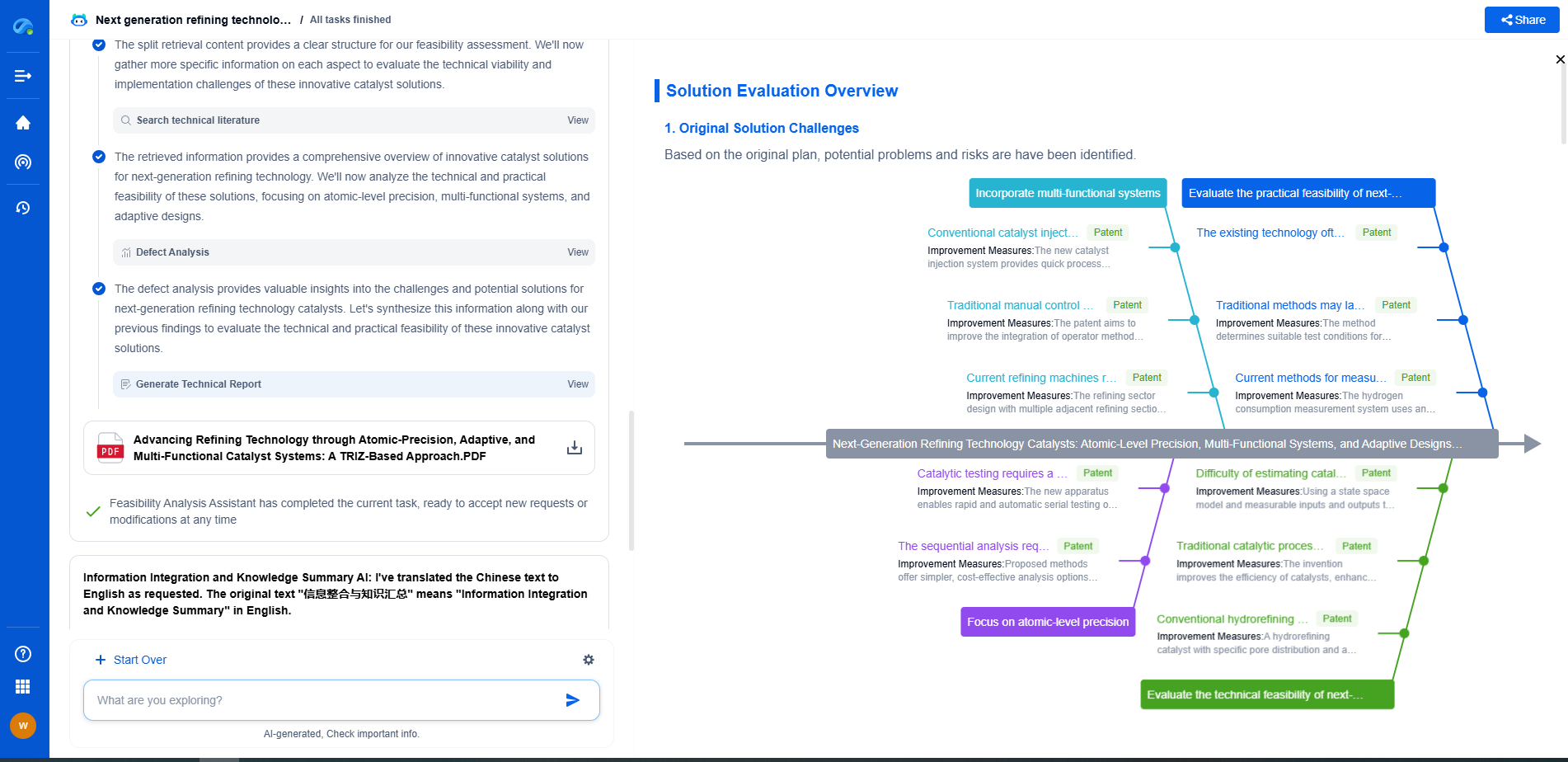How is accuracy measured in robotic manipulators?
JUN 26, 2025 |
Robotic manipulators are pivotal in various industries, ranging from manufacturing and automation to healthcare and research. A critical aspect of their performance is accuracy, which determines how precisely a manipulator can position its end effector in space. Measuring and optimizing this accuracy is essential for ensuring efficiency and reliability in robotic operations.
Defining Accuracy in Robotic Manipulators
Accuracy in robotic manipulators refers to the degree to which the position of the robot's end effector matches a pre-defined target position. It is a measure of the manipulator's ability to reach a desired point within its workspace without deviating from the expected path. In essence, accuracy measures how close the end effector can get to the intended position, accounting for various internal and external factors that may influence performance.
Factors Affecting Accuracy
Several factors can affect the accuracy of a robotic manipulator. These include the precision of its sensors and actuators, the quality of its mechanical components, and the control algorithms used to manage its movements. External factors such as environmental conditions and payload variations can also impact accuracy. Understanding these factors is crucial for developing strategies to enhance a manipulator's precision.
Methods for Measuring Accuracy
Accurate measurement of a manipulator's accuracy involves several techniques, each offering unique insights into its performance.
1. **Static Accuracy Testing**: This involves positioning the robot's end effector at a series of fixed points and measuring the deviation from the intended positions. Static accuracy is often tested using coordinate measuring machines (CMMs) to provide high precision measurements.
2. **Dynamic Accuracy Assessment**: Unlike static tests, dynamic accuracy focuses on the manipulator's performance while in motion. This involves tracking the end effector's path using advanced motion capture systems or laser trackers, allowing for the analysis of deviations during continuous movements.
3. **Calibration Procedures**: Calibration is crucial for improving a robotic manipulator's accuracy. By identifying and compensating for systematic errors, calibration ensures that the robot's control system aligns with its physical operation. This process often involves adjusting the robot's model to match its real-world behavior.
Enhancing Accuracy in Robotic Manipulators
Improving the accuracy of robotic manipulators requires a multifaceted approach that addresses both hardware and software components.
1. **Enhanced Component Quality**: Investing in high-quality sensors, actuators, and mechanical parts can significantly improve a manipulator's accuracy. Precision engineering in these components reduces the margin for error during operation.
2. **Advanced Control Algorithms**: Implementing sophisticated control algorithms that account for dynamic changes and environmental variations can enhance accuracy. These algorithms can adapt to real-time data, minimizing deviations from the desired path.
3. **Regular Maintenance and Calibration**: Routine maintenance and periodic calibration are essential for sustaining accuracy over time. Ensuring that all components are in optimal condition and that the control system is correctly aligned with the robot's physical state helps maintain accuracy.
4. **Environmental Considerations**: Minimizing the impact of external factors, such as temperature fluctuations and vibrations, can also help improve accuracy. Implementing environmental controls in the robot's operating area can mitigate these influences.
The Importance of Accuracy in Robotic Applications
High accuracy in robotic manipulators is paramount in applications where precision and reliability are critical. In manufacturing, for instance, accurate robots ensure consistent quality and reduce waste. In healthcare, precise robotic systems can perform delicate surgeries that require exact movements. Thus, investing in accuracy is not only a technical necessity but also a strategic advantage in various industries.
Conclusion
Measuring and enhancing the accuracy of robotic manipulators is a complex yet crucial task that involves understanding the interplay between mechanical, electronic, and environmental factors. By employing precise measurement techniques and implementing strategies to improve both hardware and software components, industries can ensure that their robotic systems perform with the precision required to meet the demands of modern applications. As technology advances, the pursuit of greater accuracy in robotic manipulators will continue to drive innovation and open new possibilities for automation and control.
Ready to Redefine Your Robotics R&D Workflow?
Whether you're designing next-generation robotic arms, optimizing manipulator kinematics, or mining patent data for innovation insights, Patsnap Eureka, our cutting-edge AI assistant, is built for R&D and IP professionals in high-tech industries, is built to accelerate every step of your journey.
No more getting buried in thousands of documents or wasting time on repetitive technical analysis. Our AI Agent helps R&D and IP teams in high-tech enterprises save hundreds of hours, reduce risk of oversight, and move from concept to prototype faster than ever before.
👉 Experience how AI can revolutionize your robotics innovation cycle. Explore Patsnap Eureka today and see the difference.
- R&D
- Intellectual Property
- Life Sciences
- Materials
- Tech Scout
- Unparalleled Data Quality
- Higher Quality Content
- 60% Fewer Hallucinations
Browse by: Latest US Patents, China's latest patents, Technical Efficacy Thesaurus, Application Domain, Technology Topic, Popular Technical Reports.
© 2025 PatSnap. All rights reserved.Legal|Privacy policy|Modern Slavery Act Transparency Statement|Sitemap|About US| Contact US: help@patsnap.com

